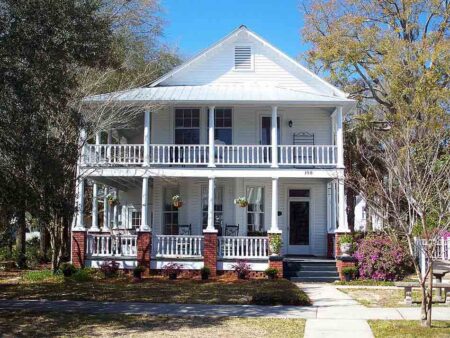NORTH FLORIDA — Q. I was heavy-handed with fertilizing my centipedegrass lawn this spring and I think I’ve killed sections of my lawn. Will the lawn recover or am I looking at replanting what looks to be dead lawn areas?
A. Here is a basic rule of thumb. If you have injured sections in your lawn that are three feet across or larger and there is less than thirty to forty percent live grass in those areas, you’ll need to replant. In this situation, there simply is not enough live plant material left to recover.
Many people overdo it in fertilizing their lawns, particularly with centipedegrass. One advantage of centipede is that it does well with minimal fertilization.
Its natural color is light green, almost a crabapple green. Centipedegrass is unforgiving when fertilized too heavily or too frequently.
Basically, all that’s needed is one or maybe two light applications of fertilizer per year – one in spring (no earlier than mid-April) and possibly a second application in mid to late summer.
An application of iron during summer may be a better option to provide a better green color versus a second application of a nitrogen-containing fertilizer.
Overdoing it with too much nitrogen, resulting in a dark green lawn, causes a condition referred to as “Centipedegrass Decline.” This decline results in areas of the lawn declining/dying, sometimes large areas.
The decline usually happens in the same year or up to several years following overdoing it with too much nitrogen fertilizer.
Here is a link to a UF/IFAS Extension publication on centipedegrass with more info: https://edis.ifas.ufl.edu/publication/LH009
Q. Many of the young leaves on my river birch tree look crinkled and thickened. What caused this and do I need to treat it?
A. What you’ve described sounds like aphid injury.
Aphids are small, soft body insects. They will sometimes feed on young tender leaves as the leaves first emerge in spring.
Aphids insert their needle-like mouthpart into young tender leaves and suck the “juice” from the leaves. This feeding results in the leaves becoming crinkled and thickened and is common on river birch trees.
As the leaves mature, aphids find it more difficult to penetrate the leaves and move on to other plants. Some of the affected leaves may not develop properly and may fall prematurely.
It’s more of an aesthetic problem, though. In my opinion, it’s not practical to treat for aphids on a large tree. The damage they cause is more visual and should not cause a long-term problem for the health of your tree.
Larry Williams is the Extension horticulture agent with the Okaloosa County Cooperative Extension Service, University of Florida. Contact Larry at 689-5850 or email lwilliams@myokaloosa.com.






